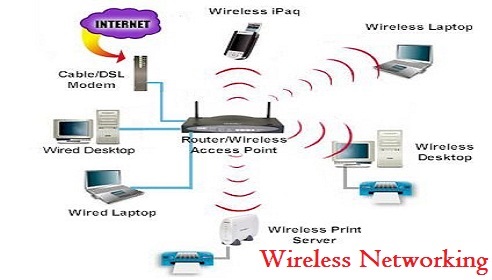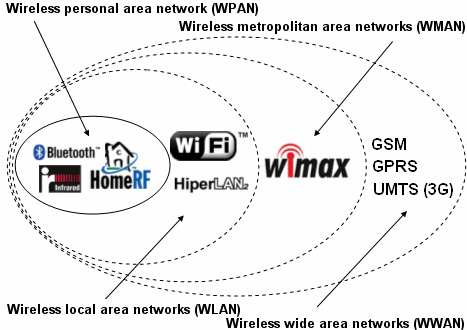Introduction to Wireless Technology
“It has become appallingly obvious that our technology has exceeded our humanity.” Albert Einstein
When person A calls up person B, the sound is transmitted through the air to the ears of a person B. Same will happen when person B replies back to person A. This in itself brings up the question such as “How old is wireless communication?” Finding the answer for such question requires traveling back to the history of mankind in order to find out when humans have started to communicate? An acceptable answer has been provided by Chandra (2005) saying that “wireless communication between humans is as old as the human civilization itself, for as soon as the first humans started communicating with each other using their vocal cords, we had achieved wireless communication” (p. xii). The sound that is coming out from the mouth of a person A disappears in the air and then on the other side touches the ear of the person B. This approach of communication pushes to find out the route of the sound. Which is the route that the sound is traveling on through which on the other side is reaching the destination, i.e. the ear? In relation to this Chandra (2005) has stated that “the term wireless communication is usually used to refer to wireless communication beyond the ‘line of sound” (p. xii).

Now that we know how old wireless communication is, would be in our interest to find out the answer to the other question, such is “How old is wireless technology?” Continuing my travel through the time, we find out that in 19th century Hertz has been invented by German physicist Heinrich Rudolph Hertz. In relation to Hertz, Vines (2002) states that “sound waves normally range from about 20 Hertz (Hz) to 20 Kilohertz (thousands of Hertz, kHz)” (p. 33). According to Maxim & Pollino (2002) the major breakthrough in wireless technology took place when “Guglielmo Marconi transmitted the first wireless radio signal through the Italian hillside in 1894” (p. 3). Since than, Maxim & Pollino (2002) are saying that “wireless technologies have transformed how people communicate and receive information” (p. 3). This proves to be reality by comparing the wireless technologies of 20th and 21st centuries with that of 19th, century. Such transformation of wireless technologies is explained by Maxim & Pollino (2002) saying that “from the amplitude modulation (AM) radio sets of the 1920s to the multiple wireless devices of the twenty-first century, wireless technologies have evolved dramatically, defining new industries in the process and spawning a host of new products and services” (p. 3).
Advantages of Wireless
More and more noticeable is the fact that the human being is becoming mobile. With this said, there is more desire than ever to complete daily works while on the go. Gast (2002) adds that “traditional ways of networking the world have proven inadequate to meet the challenges posed by our new collective lifestyle” (p. 6). If no wireless technology would exist, than ask your self “how much mobile would you be?” Without any doubt the wired network ruins down the concept of mobility. In contrast to wired network Gast (2002) says that “wireless connectivity, however, poses no such restriction and allows a great deal more free movement on the part of the network user” (p. 6). Reality is proving continues Gast (2002) that “wireless technologies are encroaching on the traditional realm of “fixed” or “wired” networks” (p. 6).
When comparing wired with wireless networking, Gast (2002) adds that “the most obvious advantage of wireless networking is mobility” (p. 6). Benefits are huge from wireless networks. The best example of such benefits is mobile telephony where users can connect to existing wireless networks through theirs mobile operators, and than traveling from country to country the service is expanded for them by allowing them to be able to roam freely. With the other words, there when wired network ends its mission, wireless network is bout to start.
Besides mobility, Muller (2004) lists other advantages that come along with wireless networking (p. 291):
- Faster installation when compared to cabled networks.
- Adaptability in a dynamic environment.
- The capability of sharing an Internet or other WAN connection.
- The continuing development of new electronic devices (or newer versions) that use wireless technology, such as PDAs.
- With the widespread deployment of wireless Access Points that are being constructed in public places, the Internet is accessible from most any place that has a sizeable population.
- Reduced costs in many situations.
There is more and more interest in designing and building wireless networks than ever. In relation to this, Turner (2003) says “marketing trends estimate that by the end of 2006, 21 million homes will have implemented a Local Area Network (LAN), and of those 21 million homes 65% will use wireless solutions” (¶ 1). All this according to Turner (2003) is possible because of “rapidly decreasing cost for wireless devices and the proliferation of wireless solutions provided by the major Internet Service Providers” (¶ 1).
Ingredients of Wireless
The best way to understand how wireless network works, is to engage themselves in a process of designing and building a wireless network. Assume that you want to design and implement a wireless network in your home. With that, all the services provided would be wirelessly. To do so, you need a device called Access Point. This represents the simplest wireless network infrastructure. In a situation of covering the entire neighbor hooding block with wireless network, it takes more than a single Access Points including Antennas as well. But if it expands furthermore, in order to cover an entire town or city, than that wireless network infrastructure becomes Metropolitan Are Network. The MAN is a combination of wired and wireless networking infrastructure, as much as the neighbor hooding wireless network, and personal wireless network. Once the wireless infrastructure is built, the process of setting up services that we intended to provide along with that of adding users onto it, is a matter of minutes or even hours that involves authorization and authentication processes.

If in wired network it’s the cable the media that transmits the data from one end to another, than which media is used by wireless network. Is that the air? If Chandra (2005) says that ”the term wireless communication is usually used to refer to wireless communication beyond the ‘line of sound’” (p. xii), yet again it should utilize a media that makes possible the transmission of the data through the air to its destination. According to Osatis (2006) “wireless networks transmit data over a network medium which is a form of ‘electromagnetic radiation”. With this said, the bigger the spectrum of the ‘electromagnetic radiation’, than the bigger the coverage area where clients can benefit from great deal of mobility. Osatis (2006) states that “two mediums that have seen the widest use in wireless local-area applications are: infrared light, and radio waves.” The emerging wireless medium is also the Bluetooth technology. It promises to be a convincing wireless medium. Today, majority of PCs (especially portable) offered in the market are equipped with infrared and Bluetooth ports, in order to make fast and easy the process of connecting peripheral devices. In terms of coverage, Osatis (2006) provides the following comparison: “while, infrared light has limitations; i.e. it is easily blocked by walls, partitions, and other office construction, instead radio waves can penetrate most office obstructions and offer a wider coverage range.”
Conclusion
Among computer networks, significant percentage make up wireless networks, which nowadays is not only a trend, but a demand. With this said, regardless of the level of the security that today’s available security mechanism in wireless technology are able to provide, the need for being able to communicate and transmit data while on the go is driving forward the expansion of wireless networks. And yes, this expansion will move on in the years to come in the future.
Dear readers, hope you find this post informative.
peace and blessings,
Bekim
References:
Chandra, Praphul. Bulletproof Wireless Security GSM, UMTS, 802.11, and Ad Hoc Security. Oxford, UK: Elsevier, Inc., 2005.
Gast, Mathew. 11® Wireless networks: The Definitive Guide. California: O’Reilly, April 2002.
Merritt, Maxim & David Pollino. Wireless Security. McGraw-Hill Companies, Inc., 2002.
Mueller, Scott. Upgrading and Repairing Networks, 4th Ed. Indianapolis: QUE Publishing, 2004.
Osatis, Uklit, 27 November 2006. “Wireless LANs.” Retrieved on April 06th, 2015 from URL: http://aphroditea05.tripod.com/site_links/history/wifi.html
Turner, Raymond. Wireless Security and Monitoring for the Home Network. SANS Institute, 21 August 2003.
Vines, Russell Dean. Wireless Security Essentials. Indianapolis: Wiley Publishing, Inc., 2002.